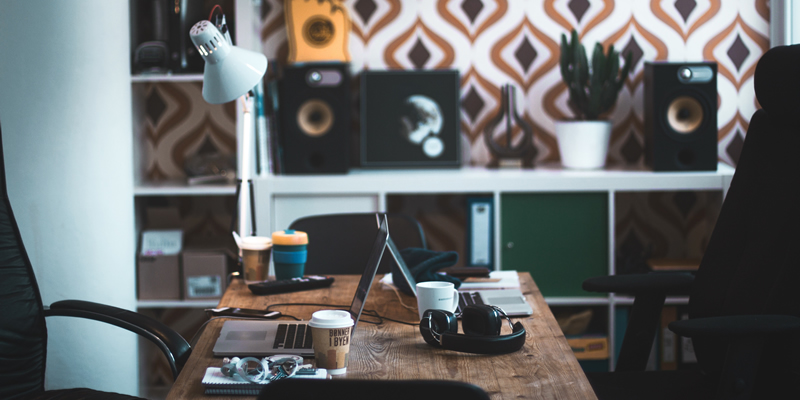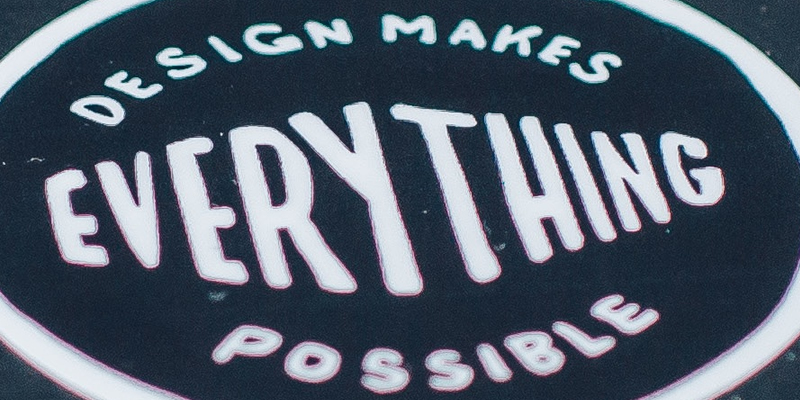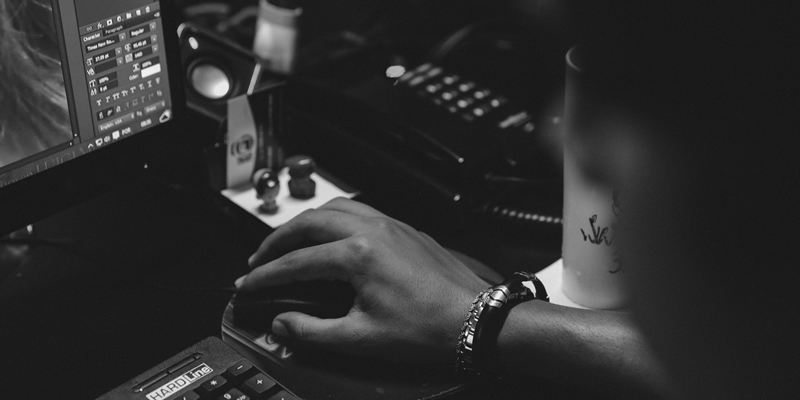10 Tips to Boost the Efficiency of Your In-House Design Team
An in-house design team can save up to 40% of your costs if managed effectively. Their work defines your brand and values in front of your customers. For a good design team, efficiency is important from several points of views. It brings better results, makes your work environment better and removes a lot of stress.
I’ve had the chance to try out many different things, some yielded great results while some failed miserably. Things that did work reflected itself in different ways. I’ve noticed that the team became more adaptive of a collaborative style of work with a better communication flow. This has been instrumental in reducing missed or delayed deadlines, better quality of work, openness for brainstorming and increased customer satisfaction.
But enough of my ramblings. Here are some tips that will helped improve the efficiency of your in-house design team:
Get the Creativity Flowing
Once a brief or a requirement is clearly defined and set in front of the team, organize a brainstorming session to come up with several ideas before they start working on developing them. In the beginning, you shouldn’t shy away from your role as captain. To keep your crew on the right course, steer a few brainstorming sessions each time a new task comes up.
Brainstorming sessions are important since they highlight a variety of different ideas and thoughts that could translate to good high-quality deliverables. In the case of designer’s block within the team, give them ample time to get back with great ideas. Keep them motivated and there’s a higher chance of increasing their creative output.

Get Them the Right Tools, Set Best Practices
“You cannot mandate productivity, you must provide the tools to let people become their best.” – Steve Jobs
Providing your team with the right tools is the best investment you can do. These tools are required to effectively convert your in-house design team’s ideas into executable designs, and also help save time. Tools must be employed for communication, project management, graphic editing, code editing, etc.
Some of the great design tools are Adobe Photoshop, Illustrator, Invision, Sketch.app, etc. For DAM (Digital Asset Management) and storage, Dropbox works well. Communication, collaboration and project management are imperative to successful and on-time completion of projects and deliverables. There are several good tools on the market for project management. However, good project planning plays an equally important role.
Setting up best practices for the team can be equally important. Things like standardized file naming conventions, appropriate storage spaces, following a templatized way of accepting new briefs, etc. go a long way in ensuring a consistent work pattern. This can considerably improve the workflow when you have multiple designers working on the same project. It also helps newcomers to get familiar with the project faster and maybe the most important thing of all, it makes transferring a part of the work to someone else way easier.
You can also establish a process for saving or archiving ideas or designs that may not have worked out. They may turn out to be useful at a later point. Circulate a best practices document within the design team so that all members can get familiar with it. This document will also be handy while onboarding new members into the team.
Autonomy and Trust Is Good for Productivity and Creativity
Autonomy and trust go a long way in building a healthy team culture. Design is primarily an art and everyone has their own ideas and solutions. However, the basic design principles and processes largely remain the same. Give your designers the autonomy to work so that they can be more creative.
Trust your designers, their experience, and their outlook. You surely have better things to do than to stand on someone’s head while they work. Most designers grasp the requirements or briefs very clearly and can provide a fantastic output if they can work in the right environment.
A Design Brief Is the Most Important Piece of the Puzzle
You can choose to follow a template for design briefs so that the designers have an exhaustive set of information to work with. Fields like output file type, size specifications, type of media are some or the basics that can be added to the template. Adding more information like when is the creative being used, the purpose or the goal of the creative, the channel it is being used on, the type of audience that may be engaging with it, etc. will provide sufficient information for the designers to come up with interesting designs. A design brief can also be visual at times.

If there are some specific comments, then convey them well in advance to the team so that they have ample time to work towards it. To avoid multiple iterations, a design brief should be studied thoroughly by the designers before they start working. If need be, set up a quick meeting between the concerned parties or departments and the design team to clarify any questions.
Meetings where designers’ opinions are valued and taken in high regards serve as a big morale boost for the team and designers start feeling more valued. Also, in case of a meeting, designers are more likely to understand the requirements better and stay within timelines, delivering well in time.
The best part about an in-house design team is that they will have a great understanding of your brand values, tone and message. Since they exclusively work for one business, the brief that you need to provide to your in-house team may be less elaborate that the one you need to provide to an agency, saving you time and energy.
Timelines Are Important, However Never Rush
Set expectations right from the beginning. A creative team should never be rushed, however, it should be emphasized about delivering on time. Most design teams run the risk of shooting deadlines since they handle multiple projects at one time.
Every project should have a deadline and a clear set of milestones. That will help designers know of the urgency of different projects and they will be able to prioritize and create their pipeline of work accordingly.
If you notice the trend of some tasks consistently taking longer to finish than approximated, take appropriate action. That is the only way to ensure a fair division of work. Delegation and optimal resource utilization form important aspects of effective project management for design.
Don’t forget to keep contingencies for unexpected leave and downtime within the team. Always keep deadlines that allow for a fair amount of review before the deliverables are to be submitted.
Change of Settings to Keep Designers Motivated
Being outdoors or in a different location other than your office can provide a much-needed change in the environment. It can also act as an inspiration at times. Other than building team camaraderie and bonding, a change in setting can also help when designers are suffering from ‘designer’s block’.
Setting up outdoor meetings can be a great way to foster creativity. Check to see if your designers are taking regular breaks. Working continuously can dull the pace and demotivate almost anyone, designers are no exception.

Reduce Unnecessary Team Meetings
Meetings are a necessary evil. You can’t work without them, and you can’t work with them. More than $37billion a year is wasted on unproductive meetings. Many meetings are unavoidable and are required to carry out the work smoothly. However, when a team starts scheduling meetings for everything, productivity goes down the drain.
Moreover, designers aren’t particularly fond of meetings. Read this article to understand their perspective.
Assign for Each Designer’s Strengths
Designers have their strengths and weaknesses. Some may be good at video, others infographics, web design, photography, illustration, animation, banner ads, etc. Some designers may have a great attention to detail and could do well for reviewing or the QC process.
Assigning work as per their core expertize reduces the effort needed for completion of a task. However, always bear in mind that work allocation should be done equally.
Communication is Important: Schedule Regular Feedback Sessions to Check for Any Bottlenecks
Most design teams are composed of millennials. This PwC report highlights that 51% of millennials prefer continuous feedback sessions. Schedule regular feedback sessions with your design team to check for any issues they are facing. A 360-degree feedback works well. Valuing open communication within the team generates a great team culture.
Try to avoid negative feedback and put it across as constructively as possible. An HBR survey revealed that 92% of respondents agreed with the assertion that “Negative (redirecting) feedback, if delivered appropriately, is effective at improving performance.” And most respondents felt that they wished to receive regular sessions of “corrective (or constructive) feedback.”
You must also have appreciation and awards sessions for highlighting achievements. You’d be surprised how well your in-house design team could respond after these. They will also give a sense of ownership.
Be Cautious of Multiple Iterations
As happens with most design assignments, there are continuous iterations that may go on in a loop until you get a satisfying output. This can happen because of changing briefs or requirements, new additions to work, not satisfying the expected output, etc. A thorough review process can aid in minimizing these roadblocks.
Be mindful that you must keep time aside for these revisions. At times, though unavoidable, they do tend to bring down the morale of your team. That is just one more reason why it is important to remind them about the good work they are doing, when the credit is due.
Designing is a dynamic art with various uncertainties like working with tight deadlines, changing briefs, multiple iterations, differing perspectives etc. Hence, there is a lot of pressure on designers to perform beyond expectations. It becomes imperative to keep them motivated and efficient at all times. With an in-house design team, you have the benefits of reducing costs, brand loyalty and reduced turnaround time. Therefore, keeping your in-house design team happy is vital.
Adopt a management style that supports working with a young and lively team of designers. Show them opportunities to develop themselves professionally and hold regular feedback sessions for an open communication within the team. Most importantly, highlighting good performances will keep up the tempo within the team.
:) Hit link to watching video...! http://ift.tt/2hY5FbY
Contributer : 1stWebDesigner
 Reviewed by mimisabreena
on
Friday, January 26, 2018
Rating:
Reviewed by mimisabreena
on
Friday, January 26, 2018
Rating:
















No comments:
Post a Comment